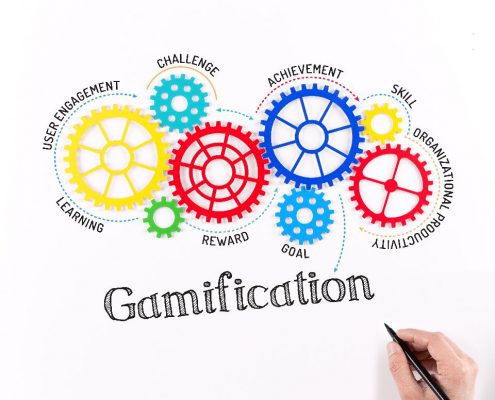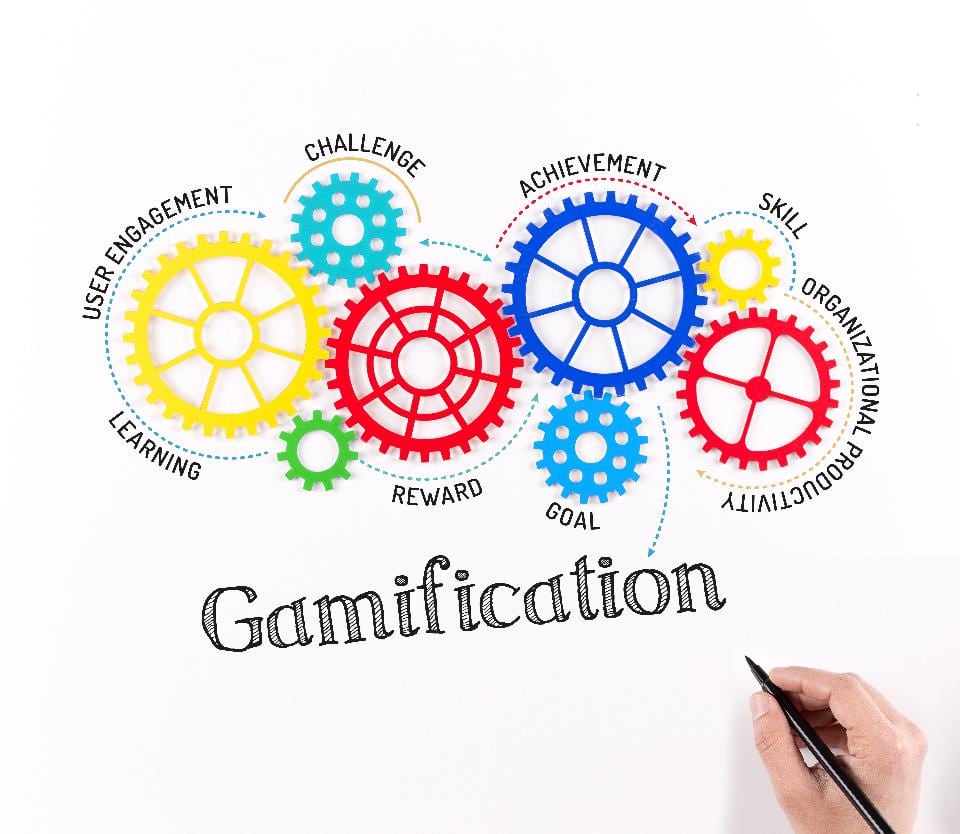
*As originally seen on Forbes.com
Are you using games to help your team achieve their goals?
Gamification creates healthy competition, learning, communication and incentives. When used properly, gamification can change the face of goal attainment in your organization.
We Are Wired To Game
Gaming puts the user in a state of flow.
“In positive psychology, flow, also known as the zone, is the mental state of operation in which a person performing an activity is fully immersed in a feeling of energized focus, full involvement, and enjoyment in the process of the activity. In essence, flow is characterized by complete absorption in what one does.” –Mihály Csíkszentmihályi
And that state of flow feels good and improves performance. Gaming also creates intrinsic motivation and arouses the player’s brain causing attention to be engaged and motivation high.

Shutterstock
The Power Of Gamification In The Workplace
Gamification: “The use of Game Design Elements in Non-Game Contexts” Sebastian Deterdin
Gaming isn’t just for teenagers. Approximately 155 million Americans spend 3 or more hours per week playing games and the average age of gamers is 35. Gaming is big business, sales (non-digital) staying consistent in 2015 with 13.13 billion dollars in sales. Chances are several members of your team are gaming for entertainment, it’s time to tap into that drive to game and apply it to goal attainment.
In business, when we take goals and put them in the context of a game, the process to achieve those goals becomes more fun and engaging. Gaming supports learning a new skill and using a combination of different skill sets to achieve a goal on an individual and team level.
Gaming Principle Applied To Goal Attainment
Our Director of Client Care is a fan of The Elder Scrolls Online: Tamriel Unlimited. Through gaming, she has refined her leadership skills and applies the techniques that her character in the game uses for great success in her day-to-day life. She visualizes her projects as ‘quests’ and her team members as part of her ‘guild’. The story of the game has similar elements to the story in her work. It may seem silly at first, but this approach combines intrinsic motivation towards stretching and achieving her goals. The best skill that she ‘practices’ when she is gaming online is that the quest is never really over. The journey continues and as she levels up, she strengthens each skill towards the new goal.
There are a vast amount of gaming styles, game systems and theory that can be applied to goal attainment. Here are a few simple ones to get you started.
• Points System: team members earn x amount of points through achieving a goal or completing a task towards a goal
• Level System: team members can achieve a Level status, based on their accumulated points
• Badge System: team members can achieve a Badge that is specific to what they accomplished
• Achievement Status: team members can be awarded a specific status based on what they have done (these are extremely popular with Fitness Apps, a person acquires an achievement based on how many steps they walked)
• Leaderboard: team members are publicly listed on a Leaderboard based on their accumulated number of points or based on the Level they achieved
All of the above are fantastic for short-term goals and for initially supporting the learning of a new skill. The goal is to create intrinsic motivation for your team and the above system, combined with deeper elements of gamification, will sustain long-term goals and stretching beyond the basic reward incentive system.
Level Up!
More advanced elements of gaming can be applied to the ‘real’ workplace as well. With the vast amount of video games, virtual realities are created that allow gamers to visualize multiple real-time streams of information. The roleplaying elements allow gamers to explore different perspectives. They can create and take on roles as someone else and experience what it’s like to work towards a goal as someone else with a different skill set. Gaming enables simulations for experimentation. You can try different methods to achieve the goal, fail and learn because you have the opportunity to explore with more than one chance to succeed.
Gaming can also incorporate team work. Many multi-player games allow you to create characters that all have vastly different skill sets and all of those skill sets are necessary to win. For example, you can create a tank (the character that goes in and can take the most damage), a healer (the character that will fight but is in charge of paying attention to the health level of all players and healing them during the battles) or a DPS (the characters that have the skills to deal the most damage), each character is extremely valuable. You can create combinations as well but these are the basic three. All of these characters are required to solve the mystery, to complete the quest and they all claim the rewards at the end. What elements from these different gaming systems can you start to implement in your organization?
Advanced Gamification should include the following elements:
• Reflection: Doing + Reflecting = Learning
• Exposition: Using a narrative sets the stage and helps transition players between stages into reflection
• Choice: Team members should have a choice of goals, how they will be scored, what they want to pursue and input on the system created
• Information: Allow team members to find what is relevant and to continue without gamification when they choose
• Play: A place for experimentation, creation, learning through failure and exploration without limits
• Engagement: Game elements are used to allow teams to engage, connect people to peers, create relationships and engagement with different perspectives (Scott Nicholson Professor of Game Design and Development at Wilfrid Laurier University in Brantford Ontario RECIPE of gamification)
Each business and team is unique, and while the concept of gamification seems simple enough (just assign x amount of points towards each step towards achieving a goal) this process needs to be brainstormed. What will resonate the most with your team/department/etc? If your Finance team loves seeing their name on the leaderboard but your HR department doesn’t, try a different approach and find something that is equally compelling for each department.
See if there are gamers on your team and ask them.






